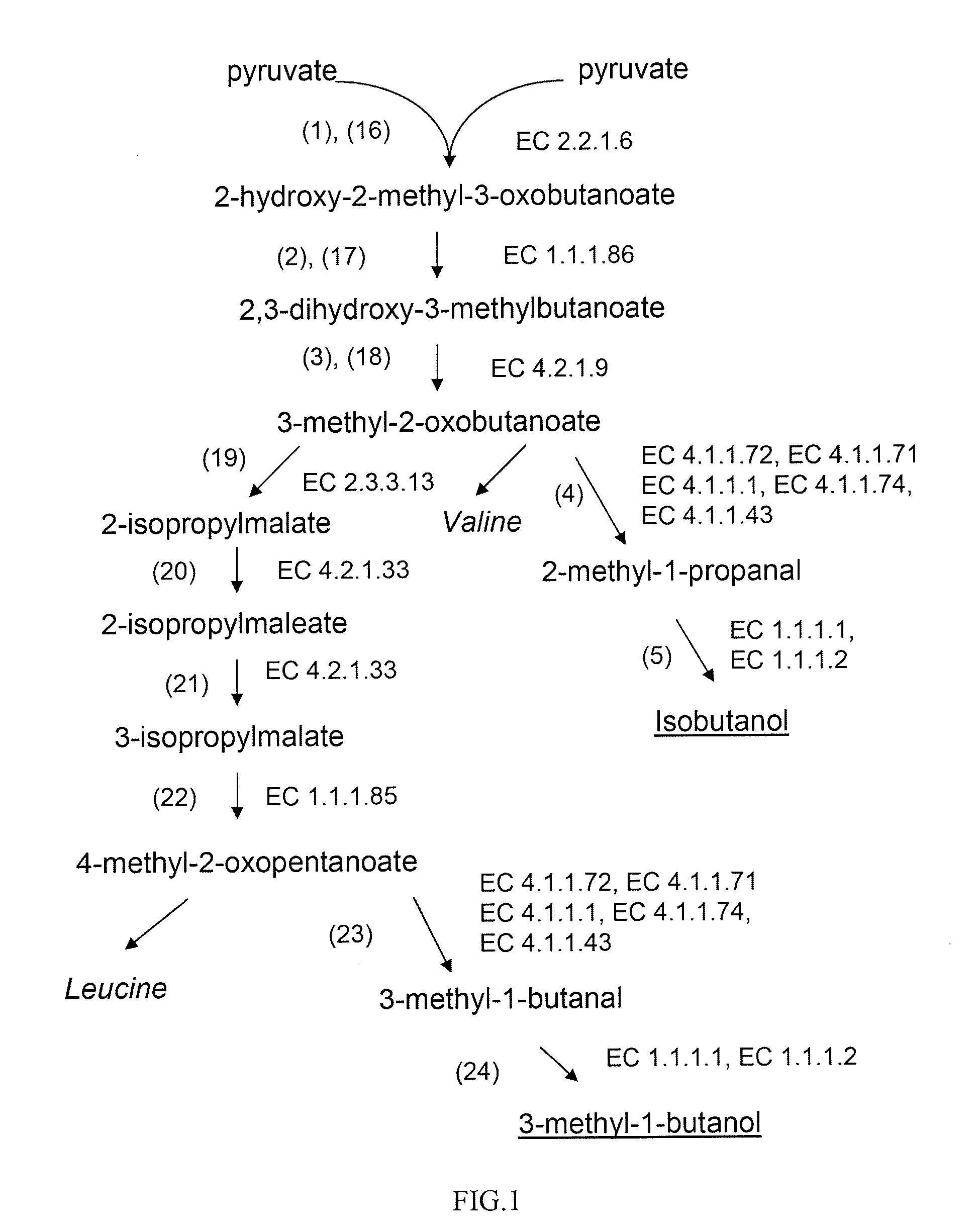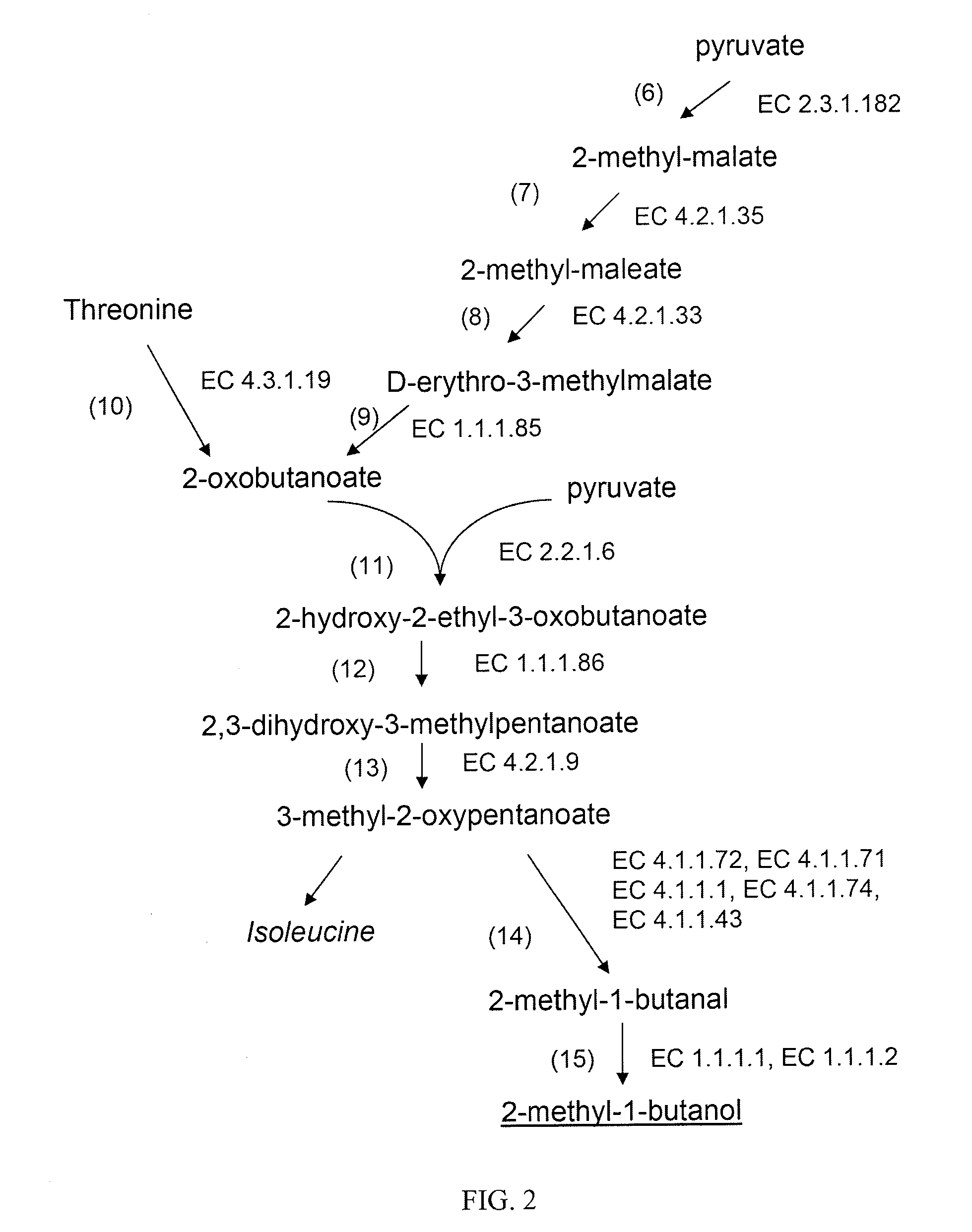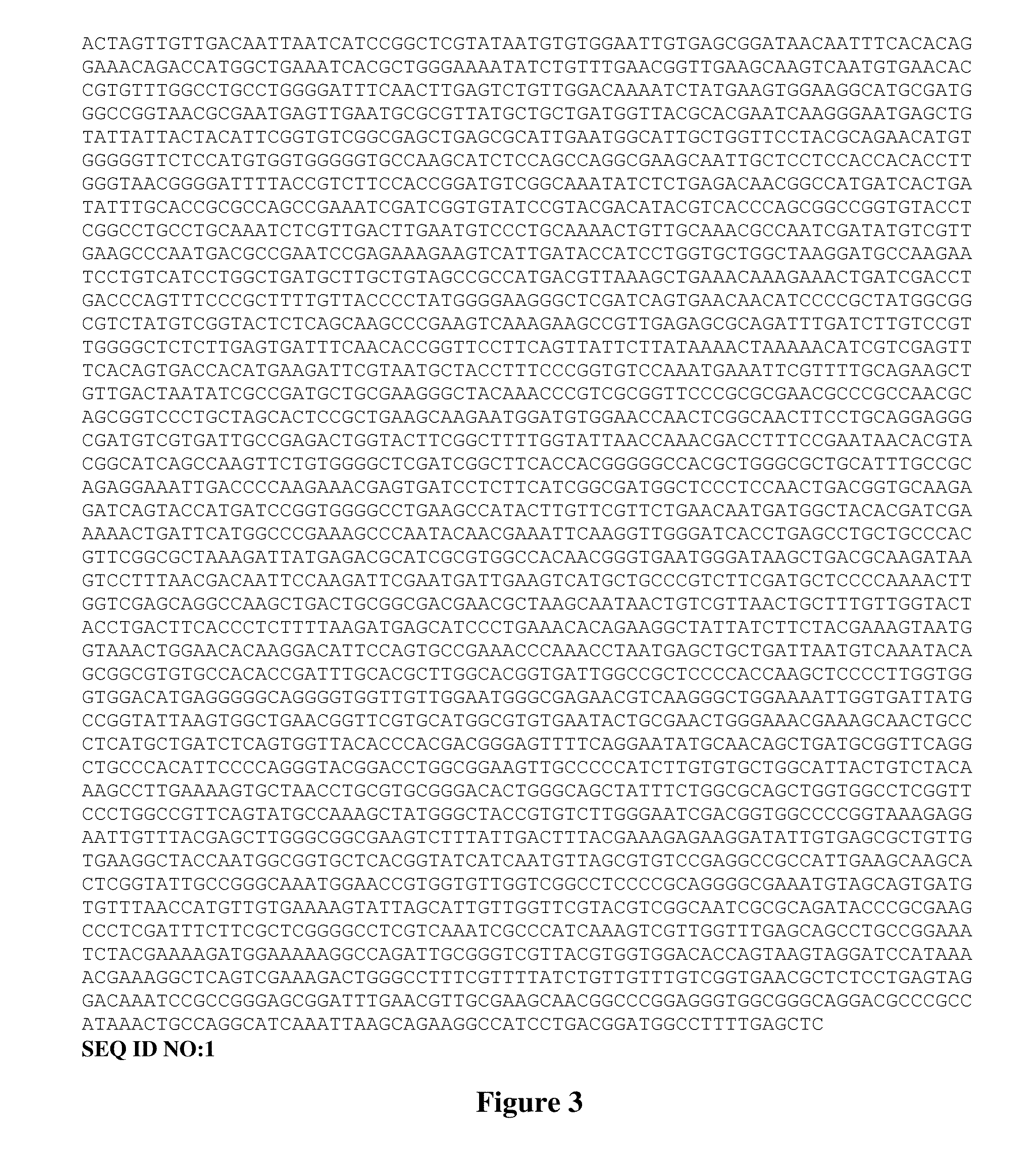Production of branched-chain alcohols by photosynthetic microorganisms
a technology of branched-chain alcohol and microorganisms, which is applied in the field of production of branched-chain alcohol by photosynthetic microorganisms, can solve the problems of adding to the cost of production and the cost of traditional methods for producing branched-chain alcohol
- Summary
- Abstract
- Description
- Claims
- Application Information
AI Technical Summary
Benefits of technology
Problems solved by technology
Method used
Image
Examples
example 1
Production of Isobutanol, 2-Methyl-1-Butanol, and 3-Methyl-1-Butanol in the cyanobacterium Synechococcus
[0128]A DNA fragment comprising a functional operon was synthesized such that it contained the following elements in the given order: 1) the trc promoter, the Saccharomyces cerevisiae pyruvate decarboxylase gene (PDC1, GenBank Accession No. X77316) codon-optimized for expression in Synechococcus elongatus PCC 7942, the S. elongatus KaiBC intergenic region, the S. cerevisiae alcohol dehydrogenase gene (ADH2, GenBank Accession No. J01314) also codon-optimized for expression in S. elongatus, and the rrnB terminator. The nucleotide sequence of this functional operon is provided in SEQ ID NO:1 (FIG. 3). Codon optimization was performed by the use of the “Gene Designer” (version 1.1.4.1) software program provided by DNA2.0, Inc. The plasmid pSGI-BL3 was constructed by inserting the operon between SpeI and SacI restriction site in the vector pAM2314 (Mackey, et al., Methods Mol. Biol. 3...
example 2
Production of Isobutanol, 2-Methyl-1-Butanol, and 3-Methyl-1-Butanol in the cyanobacterium Synechocystis
[0138]The functional operon (expression cassette) containing the codon-modified S. cerevisiae PDC1 and ADH2 genes as represented in SEQ ID NO:1 was digested by restriction enzymes Bgl II and SacI and inserted into plasmid pSGI-YC3 between the restriction sites BamHI and SacI to form plasmid pSGI-BL7, which enables integration of the functional operon into the Synechococcus sp. PCC 6803 chromosome at the “RS1” recombination site (Williams, Methods Enzymol. 167:766-778). Plasmid pSGI-BL22 contains the S. cerevisiae codon-modified PDC1 and native ADH6 genes as represented in SEQ ID NO:3 and was made by inserting a SpeI / SacI fragment from plasmid pSGI-BL20 into SpeI / SacI-digested pSGI-YC3. Plasmid pSGI-BL23 contains the L. lactis KDCa and S. cerevisiae native ADH6 genes as represented in SEQ ID NO:4 and was made by inserting a SpeI / SacI fragment from plasmid pSGI-BL21 into SpeI / SacI-...
example 3
Enhanced Production of Branched-Chain Alcohols in Strains of Synechocystis sp. by Overexpression of an Acetolactate Synthase Gene
[0141]A 1.6-kbp DNA fragment comprising the coding region of the acetolactate synthase gene from Synechocystis sp. PCC 6803 (ilvB, Cyanobase gene designation s111981) was amplified from genomic DNA using PCR with primers ilvB-5 (GTTGCACATGTTAGGGCA AATGAACACCGCAGACC SEQ ID NO:5) and ilvB-3 (CTACGTTAACGACAGAGATCT TTATTCCCAAATTTCACAGGCCA; SEQ ID NO:6). This PCR fragment was digested with the restriction enzyme PciI and BglII and the ilvB gene coding region was then inserted into the expression cassette of pSGI-BL27 between the NcoI site and BglII site to yield pSGI-BL34. The expression cassette comprising the trc promoter, the ilvB coding sequence and the rps14 terminator is provided as SEQ ID NO:7.
[0142]The pSGI-BL34 vector was transformed into wild-type Synechocystis sp. PCC 6803 to form strain SGC-BL34-1 and into Synechocystis sp. strain pSGI-BL23-1 (see E...
PUM
| Property | Measurement | Unit |
|---|---|---|
| total volume | aaaaa | aaaaa |
| total volume | aaaaa | aaaaa |
| volume | aaaaa | aaaaa |
Abstract
Description
Claims
Application Information
 Login to View More
Login to View More - R&D
- Intellectual Property
- Life Sciences
- Materials
- Tech Scout
- Unparalleled Data Quality
- Higher Quality Content
- 60% Fewer Hallucinations
Browse by: Latest US Patents, China's latest patents, Technical Efficacy Thesaurus, Application Domain, Technology Topic, Popular Technical Reports.
© 2025 PatSnap. All rights reserved.Legal|Privacy policy|Modern Slavery Act Transparency Statement|Sitemap|About US| Contact US: help@patsnap.com



